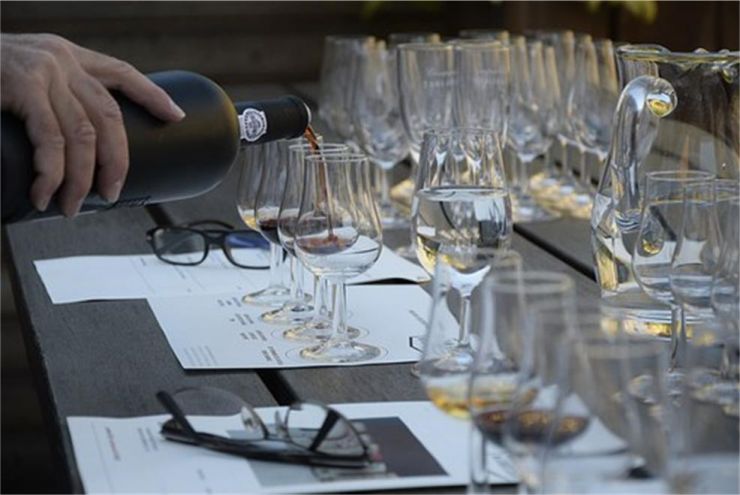What Is a Fortified Wine?
A fortified wine is a wine to which a neutral brandy (i.e., additional alcohol) has been added. Typically, fortified wines are sweet wines and are most often paired with desserts. Fortified wines, usually being both sweet and high in alcohol, are classically offered as small pours in small, specialty glasses.
There are four major fortified wines
The four major fortified wines are:
- port wine
- sherry
- Madeira
- mistelle (a fortified grape juice).
Port wine is exclusively produced in Portugal, sherry is produced in Spain, and Madeira is produced in the Madeira Islands (off the coast of Portugal).
Additional alcohol is added to fortified wines
Long before modern production techniques were invented, fortified wines were created to stabilize and kill bacteria in the wine. The process of producing a fortified wine involves the introduction of a neutral brandy into the wine as the wine is fermenting.
The fermentation process for all wines is a chemical reaction whereby an active yeast combines with the sugar in grape juice to produce alcohol, carbon dioxide and heat. The introduction of a neutral brandy halts the wine fermentation process.
To produce a sweet fortified wine, the neutral brandy is introduced at an appropriate point so that unconverted sugar from the grape juice remains in the wine – and that is why the wine is sweet.
Ports vary by color and aging technique and may be vintage
Broadly speaking, there are three types of port – ruby port, tawny port and white port.
Although both are red ports, a ruby port and a tawny port differ in how they are aged. Tawny port is aged in oak barrels, and ruby port is aged in the bottle (if at all). The amount of oak aging for a tawny port is typically indicated on its bottle – 10, 20, 30 years, etc.
Most ports are blends of wine from different years, but vintage ports (approximately 1% of total production) are also produced. A vintage-dated tawny port is known as a “colheita”.
Sherries vary by sweetness and are always a blend from multiple years
Sherries may be dry (“fino”), sweet (“oloroso”) or something in between ("Amontillado").
The production of sherry involves a blending system known as a “solera.” The solera system is an interconnection of several rows of stacked wine barrels, where each row contains wine from a different vintage year. The sherry that is bottled from the bottom of the solera system ultimately contains wine from all of the vintage years that are present in the solera. This method ensures a consistent product from year to year.
Madeira is a cooked wine
Madeira, a nutty, somewhat tangy wine, is a cooked wine and may be dry or sweet (from sweetest to driest: “sercial,” “verdelho,” “bual,” “malmsey”).
To produce Madeira, the wine is cooked in barrels inside a heated structure known as an “estufa.” This process was invented to mimic a historic “accident” that gives Madeira its unique taste. In this "accident," the wine was inadvertently cooked by the heat of the sun as it was being shipped from the Madeira Islands through the equator on its way to be traded.
"Fortified wines, usually being both sweet and high in alcohol, are classically offered as small pours in small, specialty glasses. "



